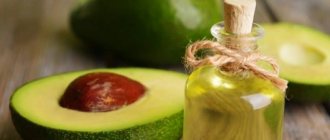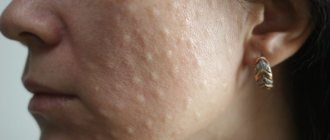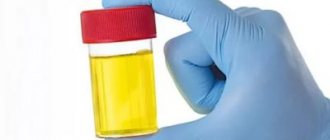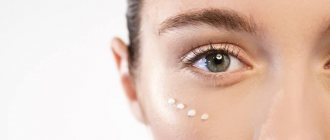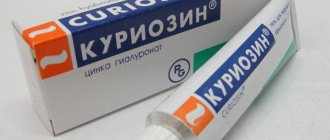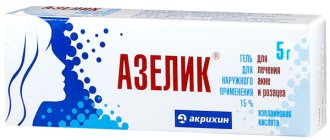Amino acids for the skin are extremely useful, irreplaceable substances, the properties of which for our health are almost impossible to overestimate. We will talk about their healing effect in more detail in the corresponding section, but I would like to clarify right away: it is not limited to just getting rid of facial and age wrinkles, as women who are far from cosmetology mistakenly think. But since this topic is too vast (chemists know more than 130 types of amino acids), the traditional presentation format will not be entirely appropriate. Therefore, it was decided to offer you a review, generalizing material that will give a general idea of such valuable substances. At the same time, we tried to preserve our traditional sections describing the beneficial properties of the most important amino acids for facial skin, as well as options for their practical use in cosmetology. We hope you will not object to this “simplification”.
What are amino acids
Amino acids are organic compounds that make up proteins (proteins). To build proteins, the human body uses 20 amino acids, which are connected in chains in a certain sequence, forming various protein structures.
Any proteins are a chain of amino acids.
The most important protein compounds for the skin are:
- collagen and elastin, which form the inner framework of the skin;
- keratin, which makes up the stratum corneum of the skin and hair.
With age, protein synthesis slows down, and quantitative and qualitative changes occur in protein structures in the body. Visually, this manifests itself in loss of skin elasticity, thinning, and the appearance of wrinkles. Amino acid complexes are used in anti-aging cosmetics and beauty treatments to stimulate protein synthesis in the skin.
Properties of amino acids
Amino acids in cosmetics are valued for their versatility.
One of the advantages of amino acids over other active cosmetic ingredients is their small molecular size, which allows them to penetrate deeply and participate in renewal processes. By the way, such a fashionable and promising component as peptides is also a chain of amino acids, but it is several times shorter than that of protein compounds. Amino acids act as links in these chains in both proteins and peptides.
What do amino acids do in cosmetics:
- are part of the natural moisturizing factor;
- restore skin barrier functions;
- promote tissue regeneration (for wounds, injuries and sunburn);
- improve the condition of dry, cracked skin;
- provide antioxidant protection.
In the life of the skin, amino acids are one of the main structural elements and participants in many reactions. If the body lacks them, amino acids are taken orally as part of dietary supplements and used externally, applied directly to the skin as part of cosmetic care products.
What functions do amino acids perform?
- perform a protective function;
- help restore skin condition;
- normalize moisture levels, which promotes natural hydration;
- give elasticity to the outer ball of the skin;
- regulate the exfoliation of keratinized epidermal cells;
- responsible for the normal level of acid-base balance;
- create a lipid barrier;
- directly participate in regeneration processes;
- neutralize free radicals and their harmful effects.
As we age, our body begins to produce less and less essential amino acids. It turns out that we do not receive enough amino acids, which leads to rapid aging, loss of elasticity and firmness of the skin, and a significant change in the structure of the hair. So it's not surprising, or even encouraging, that cosmetic brands are striving to infuse their products with essential amino acids. These components are extremely important in anti-aging cosmetics, but they are also present in other cosmetics, because some amino acids are not produced by the body at all. This complex of amino acids is called essential, because we can get them either with food, or as part of cosmetics for facial skin or other products. You have often come across a face lotion with amino acids or a mask with amino acids. But how beneficial do they work and do they work at all?
Why are cosmetics with a complex of amino acids so popular if you can include those products that contain amino acids in your diet? And the answer is simple: firstly, as mentioned above, not all amino acids can be produced by our body, and, secondly, the amino acids in a face lotion or mask are small enough and perfectly penetrate directly into all layers of the skin, and this is a big advantage in the process facial skin care. In addition, along with a lotion or mask with amino acids for facial skin, you receive a whole range of vitamins and minerals, that is, comprehensive care that is aimed at complete restoration and support of important processes for further skin regeneration.
What amino acids exist and what are their functions:
There are two types of amino acids:
- Replaceable (produced by the body independently);
- Essential (the body can obtain them from food and additional sources - cosmetics, for example).
Linoleic and linolenic acids.
Polyunsaturated essential fatty acids that act as a lipid in cell membranes. Thus, acids perform a protective function, help cells adapt to adverse weather conditions and soften the epidermis.
Contained in: walnuts, red fish, avocados and other foods.
Arginine and aspartic acids.
These acids not only nourish the skin, but can also even out the complexion and add shine. Their effect is immediately noticeable and will certainly please those who often forget to get enough sleep
Contained in: asparagus, peanuts, tomatoes, coconuts, beef, etc.
Proline, serine and glycine
This combination of amino acids is responsible for cell renewal and is able to heal wounds and exfoliate dead skin.
Contained in: marmalade, jelly, cartilage, nuts, wheat, etc.
Valine and threonine
Help rejuvenate the skin by enhancing the effect of active substances in the skin.
Contained in: red caviar, parmesan, lentils, squid, beans and much more.
Thus, it turns out that amino acids are an essential element in the functioning of the whole organism. With the help of amino acids, human skin not only acquires a beautiful appearance, but also with the constant use of cosmetics with these components, you can prolong youth.
In addition to the complex of amino acids, the lotion or face mask should also contain a complex of minerals and vitamins (B5, E, PP and F). Minerals, in turn, will have an anti-inflammatory and soothing effect and help skin cells breathe. At the same time, skin regeneration improves. Vitamins will give softness, improve blood circulation, even out skin tone, reduce swelling and dryness of the skin.
In the absence of a complex of amino acids or their deficiency, your skin will be more vulnerable to damage from external factors, the intensity of aging will increase, and other problems will appear. To avoid or neutralize such consequences, the balance of amino acids in the composition of your cosmetics is important.
All you have to do is choose a brand of natural cosmetics that will be saturated with all of the above components of amino acids, vitamins and minerals.
Package
The cream is packaged in a plastic tube and cardboard box. The box is sealed in cellophane film. Such packaging reliably protects the active components from light, oxygen and rapid “loss of freshness”. You don’t have to get your fingers into the cream or fiddle with spatulas - it’s convenient and hygienic. To remove the cream from the tube, it is more convenient not to press, but to slightly shake the lid down. A volume of 100 ml will last a long time.
Amino acids: food and other sources
All these circumstances are reflected in the need for various drugs that supply both essential and non-essential amino acids. Because healthy food and a healthy intestine are a combination that is not always found, and basically we cannot provide ourselves with a sufficient number of certain amino acids without taking dietary supplements. In addition, all proteins have a so-called lifetime. In other words, over time, their structure undergoes age-related changes: some bonds in them weaken due to the loss of atoms and even some molecules, and the appearance of foreign inclusions. For example, collagen becomes less elastic and durable over time.
If the body receives amino acids in sufficient quantities, then they are used not only for the synthesis of new proteins, but can also participate in the renewal of “old” ones. Collagen is no exception. One can even say more that the more often a protein is exposed to unfavorable conditions, the faster it “ages”, which means it requires restoration and synthesis.
Review from a cosmetologist
Amino acids are considered almost a panacea for all diseases, but this opinion is only partly true. These substances do a wonderful job of treating facial and age-related wrinkles, effectively moisturizing facial skin, slowing down the natural aging process, and performing many other tasks. But if the manufacturing technology of this or that cosmetic product is affected, the consequences can be very dire. Therefore, I strongly do not recommend purchasing medicinal or decorative cosmetics from dubious stores. Only by purchasing the product from serious and reputable retail outlets will the healing properties of amino acids not be burdened by side effects.
The effect of various amino acids on the skin
Amino acids are protein substrates and regulators of protein metabolism and are safe for humans.
An in vitro study found that glutamine
increases procollagen mRNA levels and collagen content, and suggested that de novo synthesis of proline from glutamine is important for collagen synthesis.
Proline and its precursors, glutamate and pyrroline-5-carboxylate, enhance collagen synthesis in human fibroblasts.
Certain amino acids, such as arginine and ornithine, as well as mixtures of amino acids, promote wound healing in rats.
However, little research has focused on the ability of amino acids to restore collagen synthesis in the skin after UV irradiation.
Hydroxyproline is an indicator of the quality of meat products
Since hydroxyproline is contained in large quantities in scleroproteins - proteins contained in the skin, tendons, ligaments, its increased content in meat products indicates production from low-quality raw materials. Manufacturers use the so-called to reduce costs. “animal protein”, which is made from the skins of farm animals. The hydroxyproline content in such a product is about 10%, while in high-quality beef for the production of elite varieties of sausage it is no more than 3%.
In Europe, legislators have limited the hydroxyproline content in sausages. In Russia, the legislator does not set the standard for hydroxyproline in meat products, although research on this indicator is carried out, and Roskachestvo regularly publishes reports that do not inspire optimism. The less hydroxyproline in a meat product, the more complete the product. This also indicates that higher quality raw materials were used for its production.
Another indicator of the quality of meat products is the Tryptophan \ Oxyproline ratio. Tryptophan is found in muscle proteins. Its high content indicates the biological usefulness of the meat product, while the presence of hydroxyproline indicates the use in the production of low-quality surrogates from processed leather, ligaments and tendons. A person cannot determine the use of meat substitutes by taste and smell. It is recommended to read labels carefully, because the manufacturer is obliged to indicate the use of a surrogate, which is disguised under the definition of “animal protein”. Usually on the label the ingredients are listed in descending order, i.e. in a relatively high-quality product, “animal protein” will be listed at the end of the list, not at the beginning.
Amino acids and hyaluronic acid: perfect synergy for youthful skin
Currently, cosmetologists can offer their patients a large selection of effective anti-aging procedures. Replenish missing volumes, correct ptosis, eliminate pigmentation - this and much more can be achieved using modern aesthetic techniques. Injections of hyaluronic acid to improve skin quality have been successfully used for quite a long time, but unfortunately, they do not always give 100% results. This situation can be changed by combining hyaluronic acid with collagen synthesis activators, which can be amino acids.
Indications for use
The substance as part of various drugs is prescribed:
- with full or partial parenteral nutrition , in combination with other amino acids , glucose , fat emulsions ;
- as a preventive measure for protein loss when normal nutrition is impossible or insufficient (with inflammatory bowel diseases, pancreatitis , fistulas , malignant tumors , in preparation for surgery or in the postoperative period);
- in hypermetabolic states , after burns, injuries, sepsis ;
- to correct vascular defects;
- for rheumatoid arthritis and Paget's disease .
Application in cosmetology
Amino acids are delivered to the skin using electric currents and ultrasound.
Amino acids are hydrophilic, that is, water-soluble substances, so they need help to overcome the waterproof lipid layer of the skin. Special techniques successfully cope with this task.
- Galvanization
The amino acid complex reaches its destination thanks to electric current. - Ultraphonophoresis
The drugs are carried out into the skin using ultrasound.
- Mesotherapy
A proven method of introducing active ingredients into the skin using injections.
- Peelings
Damage to the hydrolipid film with an acid solution allows the product to reach the deeper layers of the skin
Application in cosmetics
The ability of amino acids to build new protein structures is also valued outside beauty salons. We will find examples of formulas with amino acids in products for the face, as well as for hair, because keratin is a protein that forms the hair shaft, and with the help of amino acids it can be restored and strengthened.
Facial products
Face creams with amino acids
- The night mask Aquasource Night Spa, Biotherm, saturates the skin with moisture with the help of the signature ingredient Life Plankton - cellular water of thermal plankton, saturated with microelements and amino acids.
- Prolagène Lift anti-wrinkle firming day cream, Decléor, fights wrinkles and helps strengthen the skin from the inside through the action of the amino acid L-Proline in combination with oils.
- Light moisturizer with a mattifying effect Daily Moisture, SkinCeuticals, helps normalize metabolic processes in the skin, the production of collagen and elastin thanks to seaweed extract rich in amino acids and minerals.
Hair products
Hair products with amino acids
- Amino Acid Conditioner, Kiehl's, with amino acids for all hair types, softens and smoothes hair, while strengthening it with amino acids and wheat proteins.
- Intensive nourishing and restorative hair mask Derсos, Vichy, “completes” the keratin around the hair shaft due to a complex of ceramides and a cocktail of five amino acids (arginine, glutamine, serine, cysteine, proline).
What are the main causes of visible signs of skin aging?
We all know that the skin, like the entire human body, ages. The main signs of aging that our patients most often pay attention to are a decrease in skin tone and elasticity, and as a result, a change in the clarity of the face, the appearance and worsening of wrinkles and folds. If we talk specifically about these signs of aging, then it is necessary to remember that this is a visible consequence of a decrease in the quality of the middle layer of the skin - the dermis, manifested in a decrease in the content and changes in the quality of collagen and hyaluronic acid. This is one of the main causes of aging. And the essence of most cosmetic anti-age procedures aimed at improving skin quality is to stimulate the synthesis of endogenous collagen and hyaluronic acid, which can compensate for changes in skin texture and tone and increase its elasticity.
Smell and texture
The smell is sweetish, powdery. The fragrance is not very strong and dissipates quickly. Will not bother sensitive noses. The airy creamy texture is pleasant to the touch and spreads easily over the skin. Absorbs instantly without leaving any grease or stickiness. Can be applied under makeup. A few seconds after application, a slight tingling sensation and pleasant warmth are felt. A noticeable visible effect immediately after application - the skin is smoothed, smooth and velvety.
What role do amino acids play in preparations for improving skin quality?
Collagen is a protein molecule, and in order for it to be synthesized by a fibroblast, it is not enough to simply stimulate it. We need the skin to currently contain free amino acids, which are the building blocks for collagen.
The structure of collagen is very specific and its composition mainly includes repeating sequences of amino acids: glycine, proline, lysine. If there is a lack of these amino acids, even active stimulation of collagen production will not lead to its full formation.
In addition, it was found that amino acids are regulators of collagen synthesis. The fact is that in the skin it is constantly being renewed: the “old” is broken down into amino acids, and new ones are synthesized. An increase in the concentration of free amino acids in the dermis - products of collagen breakdown, affects the synthetic activity and proliferation of fibroblasts, ensures their positive chemotaxis to the site of increased amino acid concentration, and reduces the rate of degradation of existing collagen.
Accordingly, the exogenous introduction of collagen amino acids into the skin is perceived by cells as a signal for its synthesis. This is the basis for the effect of the JALUPRO® and JALUPRO®HMW preparations used in cosmetology practice.
Combinations of amino acids resist photoaging
Scientists investigated the effects of ultraviolet radiation and various orally administered amino acids on the rate of collagen synthesis in the skin.
Branched chain amino acids, arginine, glutamine and proline did not increase the rate of fractional synthesis of skin tropocollagen compared to distilled water, which was used as a control.
However, mixtures of essential amino acids significantly increased the rate of tropocollagen synthesis.
The result suggests that combinations of branched chain amino acids and glutamine or proline
important for restoring collagen protein synthesis damaged by ultraviolet radiation.
Sources
- https://skin.ru/ingredient/aminokisloty/
- https://vitaminclub.ua/ru/jak-amnokisloti-neobhdn-dlya-shkri-oblichchya
- https://cosmetologinfo.ru/%D0%B0%D0%BC%D0%B8%D0%BD%D0%BE%D0%BA%D0%B8%D1%81%D0%BB%D0%BE%D1 %82%D1%8B-%D0%B2-%D0%BA%D0%BE%D1%81%D0%BC%D0%B5%D1%82%D0%BE%D0%BB%D0%BE%D0 %B3%D0%B8%D0%B8/
- https://zen.yandex.ru/media/id/5a95690d00b3dd72bc0df4ec/aminokislotnye-dobavki-sposobny-zapuskat-sintez-kollagena-i-ostanavlivat-processy-fotostareniia-koji-5e274033fe289100b035aea1
- https://estet-portal.com/doctor/statyi/aminokisloty-i-gialuronovaya-kislota-dlya-uluchsheniya-kachestva-kozhi
